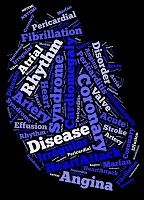Article
Statin-Intolerant Patients Have Options
Author(s):
When patients are statin-intolerant but have high cholesterol, physicians have other options, a Cleveland Clinic study finds.

Patients on statins sometimes stop taking them because of muscle pain. In a study published today in JAMA and presented at the American College of Cardiology’s 65th Scientific Session & Expo in Chicago, IL, a team reported on other ways to treat these patients.
That pain is controversial due the lack of a biomarker to confirm it. But researchers today said their study left no doubt that it is real, and that patients who suffer from such pain need an alternative.
"When you have a patient with high LDL look you in the eye and say 'I won't take a statin--they make me feel terrible' you have to offer that patient something else," said
Steven Nissen, MD, of Cleveland Clinic, Cleveland, OH.
Reporting on a study known as GAUSS-3, Nissen and colleagues compared the effectiveness of two nonstatin therapies, ezetimibe and the PCSK9 inhibitor evolocumab.
From 5% to 20% of patients prescribed statins report these muscle pains, or muscle weakness when they get evidence-based doses, Nissen said.
These patients often say they would rather risk having elevated low-density lipoprotein cholesterol (LDL-C) than put up with the statin side effects.
The researchers conducted a two-stage randomized clinical trial of 511 adults with uncontrolled LDL-C levels who were intolerant to two or more statins.
In the first phase of the study, patients got atorvastatin or placebo to identify patients having symptoms only with atorvastatin. In the second phase, patients were randomly assigned to injections of evolocumab or oral ezetimibe.
In the first phase, the team found 43% of patients had intolerable muscle symptoms with the statin, but not placebo. However, 27% of the placebo patients also had muscle symptoms, leading researchers to believe their pain was not due to statin use.
In the second phase of the study, the team found that evolocumab was better at reducing cholesterol than ezetimibe. LDL-C levels dropped an averal 50% with evolocumab and 17% with ezetimibe.
Still, 29% of the ezetimibe group reported muscle pain or weakness as did 21% of the evolocumab group.
The muscle symptoms resulted in 7% of the ezetimibe patients stopping the drug and 0.7% of the evolocumab patients.
“These findings demonstrate that both drugs are unlikely to provoke muscle symptoms and can be administered successfully in such patients,” the team concluded, noting that since most of the patients getting evolocumab still had high cholesterol levels, it might be wise to explore adding ezetimibe to their regimens.
“Neither ezetimibe nor evolocumab is approved for reduction of major adverse cardiovascular events,” they added, so further studies are needed to assess long-term safety and efficacy.





